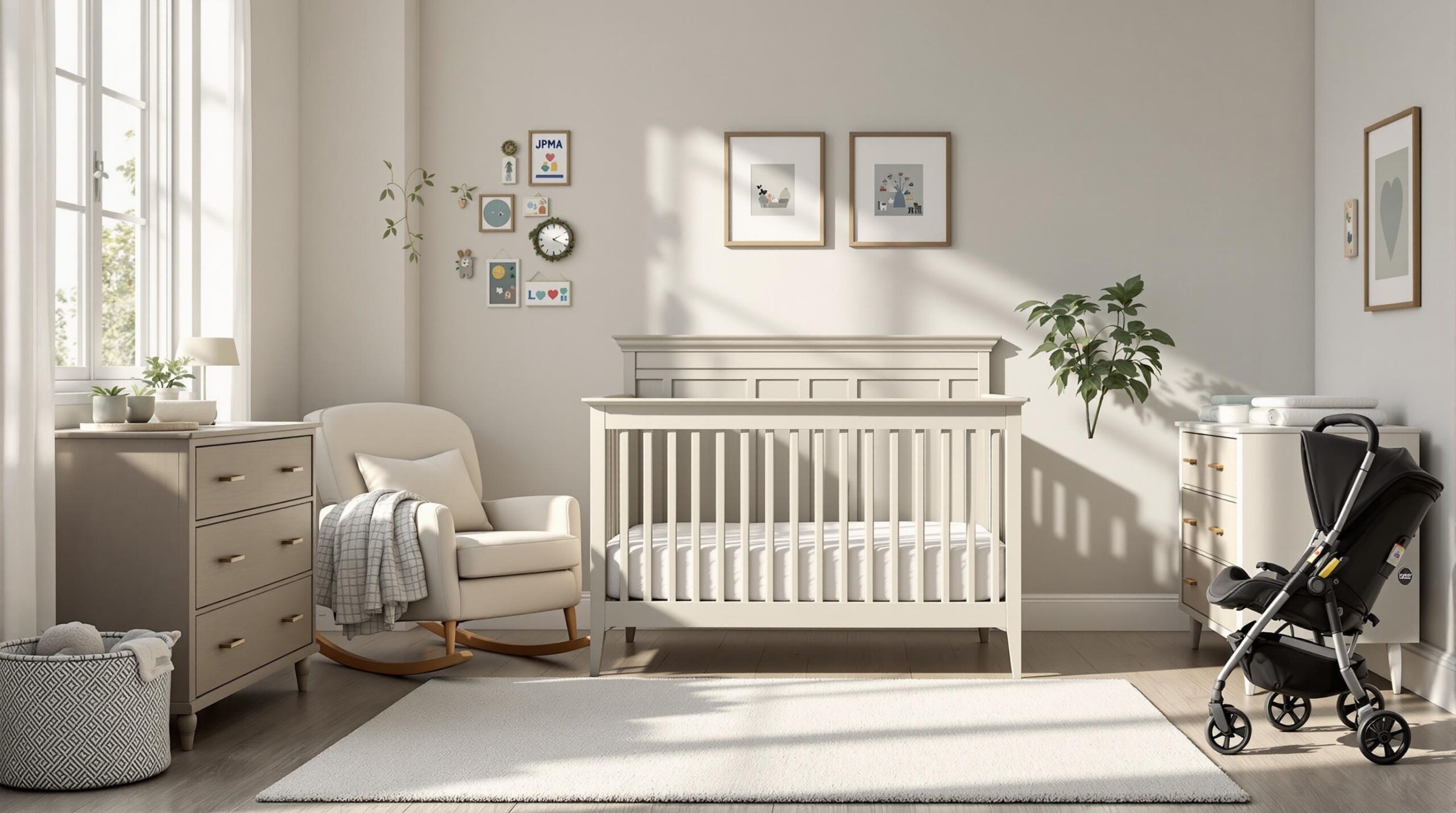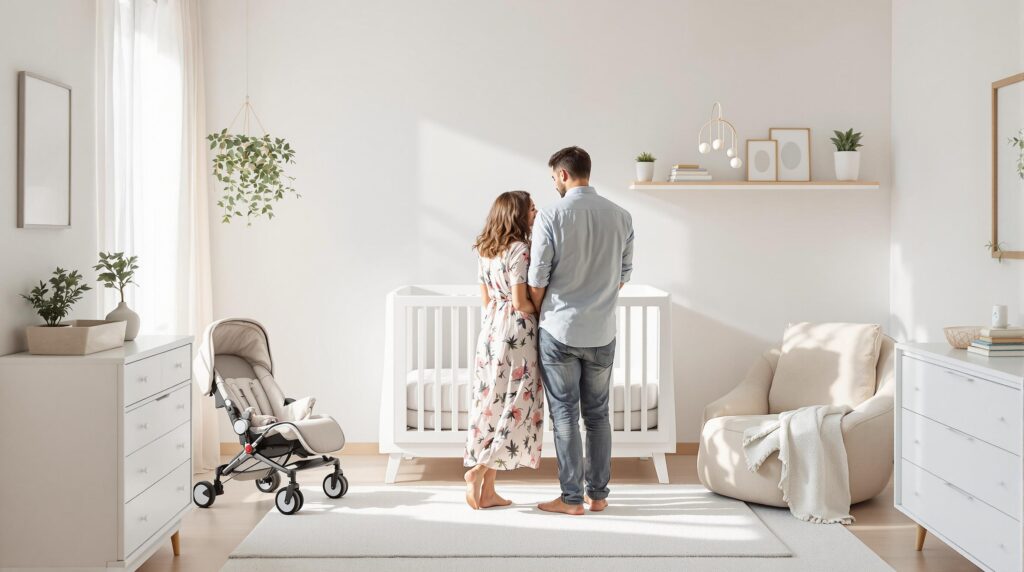Table of Contents
ToggleBecoming a parent is an exciting journey filled with joy, love, and a fair share of challenges. One of the most important tasks you’ll face is choosing the right baby gear for your lifestyle. With countless options available, it’s easy to feel overwhelmed. But don’t worry! I’m here to guide you through this process, ensuring you make informed decisions that cater to your specific needs and preferences.
Assessing Your Lifestyle and Needs: The First Step in Choosing Baby Gear
Before diving into the world of baby products, it’s crucial to take a step back and evaluate your lifestyle. This assessment will help you identify the most practical and beneficial items for your family.
Analyze Your Daily Routine
Start by examining your typical day. Are you always on the go, or do you prefer staying close to home? If you’re constantly running errands or traveling, you might want to prioritize compact and portable baby gear. For instance, a lightweight, foldable stroller could be a game-changer for frequent travelers. On the other hand, if you’re more of a homebody, you might opt for sturdier, feature-rich items that prioritize comfort over portability.
Evaluate Your Living Space
The size of your home plays a significant role in determining the type of baby gear you should purchase. If you’re living in a spacious house, you might have the luxury of choosing larger items. However, for those in apartments or smaller homes, space-saving gear is essential. Consider multi-functional items that serve multiple purposes, such as a changing table that doubles as a dresser. This approach helps you maximize your available space without compromising on necessary baby equipment.
Consider Portability and Storage
Even if you’re not constantly on the move, the ability to easily store and transport baby gear is invaluable. Look for items that fold compactly or can be disassembled for storage. This feature is particularly useful for occasional travelers or when you need to free up space at home. For example, a travel crib that folds into a compact carrying case can be a lifesaver during family visits or vacations.
Prioritize Based on Budget
Let’s face it: baby gear can be expensive. It’s essential to create a realistic budget and prioritize your purchases accordingly. Start by listing must-have items like a car seat, crib, and stroller. Then, allocate your remaining budget to nice-to-have items. Remember, you don’t need to buy everything at once. Some items can wait until your baby is a bit older, allowing you to spread out your expenses over time.

Safety First: Understanding Certifications and Standards
When it comes to baby gear, safety should always be your top priority. Understanding various certifications and standards can help you make informed decisions about the products you’re considering.
Look for CPSC and JPMA Certifications
The Consumer Product Safety Commission (CPSC) and Juvenile Products Manufacturers Association (JPMA) are two key organizations that set safety standards for baby products. When shopping, look for items that carry these certifications. They indicate that the product has undergone rigorous testing and meets or exceeds safety requirements. For example, a JPMA-certified crib has been tested for stability, mattress support, and the spacing between slats to ensure your baby’s safety.
Check Compliance with ASTM Safety Standards
The American Society for Testing and Materials (ASTM) develops safety standards for various products, including baby gear. Different types of gear have specific ASTM standards. For instance, car seats must comply with ASTM F2050-19, which outlines requirements for infant car seats. When researching products, check if they meet the relevant ASTM standards for an extra layer of assurance.
Read Safety Reports and Reviews
In addition to certifications, it’s beneficial to read safety reports and reviews from reputable sources. Organizations like Consumer Reports often conduct independent testing of baby products and provide unbiased safety information. These reports can offer valuable insights into potential safety issues that might not be immediately apparent from product descriptions or certifications alone.
Durability and Quality: Investing in Long-lasting Baby Gear
While it might be tempting to opt for cheaper options, investing in high-quality, durable baby gear can save you money and hassle in the long run.
Choose High-Quality Materials
When examining baby gear, pay close attention to the materials used. Look for sturdy plastics, strong metals, and durable fabrics. For items like strollers or high chairs, check that the frame is made from robust materials like aluminum or high-grade steel. For textiles, opt for those that are easy to clean and maintain, such as machine-washable fabrics.
Consider Longevity and Multiple Child Use
If you’re planning on having more than one child, or if you want to pass down items to friends or family, consider the longevity of the products you’re buying. Some items, like convertible cribs that transform into toddler beds, offer extended use as your child grows. Similarly, a high-quality stroller might last through multiple children, making it a worthwhile investment.
Read Parent Reviews for Real-World Durability
While product descriptions can give you an idea of an item’s durability, nothing beats real-world experience. Read reviews from parents who have used the product for an extended period. They can provide insights into how well the item holds up over time, how it handles daily wear and tear, and whether it lives up to its durability claims.
Comfort and Ergonomics: Ensuring Happy Babies and Parents
Comfortable baby gear not only keeps your little one happy but also makes your life as a parent easier. When choosing items, consider the comfort and ergonomics for both you and your baby.
Look for Ergonomic Designs
Ergonomically designed baby gear can prevent discomfort and potential injuries for both you and your baby. For example, when choosing a baby carrier, look for one that distributes weight evenly across your shoulders and hips to prevent back strain. For your baby, items like car seats should provide proper support for their developing spine and neck.
Consider Comfort Features
Many baby products come with features designed to enhance comfort. These might include cushioning, adjustable positions, or breathable materials. For instance, a stroller with adjustable handlebar heights can accommodate parents of different heights, while a crib mattress made from breathable materials can help regulate your baby’s temperature during sleep.
Test Before You Buy
Whenever possible, try out baby gear before making a purchase. Visit stores that allow you to test products, such as pushing a stroller or trying on a baby carrier. This hands-on experience can give you a better sense of how comfortable and user-friendly the item is. If in-store testing isn’t an option, look for brands with good return policies that allow you to try the product at home.
The Power of Feedback: Learning from Other Parents and Experts
One of the most valuable resources when choosing baby gear is the experience of other parents and experts in the field. Their insights can help you make more informed decisions and avoid common pitfalls.
Read Reviews on Trusted Parenting Websites
Parenting websites often feature comprehensive reviews of baby products. These reviews typically cover various aspects of the product, including ease of use, durability, and value for money. Look for sites that provide detailed, unbiased reviews rather than just product descriptions. Pay attention to both positive and negative feedback to get a balanced view of the product.
Consider Expert Opinions
Healthcare professionals and baby experts can provide valuable insights into choosing the right gear. Pediatricians, for example, might have recommendations for car seats or sleep products based on safety considerations. Child development experts might offer advice on toys or gear that support your baby’s growth and learning. Don’t hesitate to ask your pediatrician for recommendations during check-ups.
Look for Highly-Rated Products
While individual experiences can vary, products with consistently high ratings across multiple platforms are often a safe bet. For example, when choosing a baby monitor, look for models that have received positive feedback for reliability, range, and ease of use. Remember, the most expensive option isn’t always the best – focus on finding products that offer the features you need at a price point that fits your budget.
Making the Final Decision
After considering all these factors, you’re ready to make your final decisions. Remember, there’s no one-size-fits-all solution when it comes to baby gear. What works perfectly for one family might not be ideal for another. Trust your instincts and choose items that align with your lifestyle, priorities, and parenting philosophy.
Create a Must-Have List
Based on your lifestyle assessment and research, create a list of must-have items. This list should include essential gear like a car seat, crib, stroller, and diaper bag essentials. Prioritize these items and ensure they meet your safety, comfort, and durability requirements.
Consider Long-Term Value
When making your final choices, think about the long-term value of each item. Will it grow with your child? Can it be used for future children? Items that offer versatility and longevity, such as convertible car seats or adjustable high chairs, might have a higher upfront cost but can save money over time.
Don’t Forget About Practicality
While it’s easy to get carried away with cute designs or high-tech features, always consider the practicality of each item. Will you actually use all those extra features on that deluxe stroller? Is that adorable but hard-to-clean high chair really the best choice for your family? Sometimes, simpler options can be more practical and user-friendly in day-to-day life.
Be Open to Adjustments
Lastly, remember that it’s okay to make changes as you go. You might find that some items you thought were essential aren’t as useful as you expected, while others become indispensable. Be open to adjusting your gear as you learn more about your baby’s needs and your parenting style.
Choosing the right baby gear for your lifestyle is a journey of discovery. By carefully considering your needs, prioritizing safety and comfort, and learning from others’ experiences, you’ll be well-equipped to make choices that work for your family. Remember, the goal isn’t to have every gadget on the market, but to have the right tools that make your parenting journey smoother and more enjoyable. Happy shopping, and congratulations on this exciting new chapter in your life!
Sources:
U.S. Consumer Product Safety Commission
American Academy of Pediatrics
National Institute of Child Health and Human Development
Centers for Disease Control and Prevention
Consumer Reports
HealthyChildren.org
Safe Kids Worldwide
American Society for Testing and Materials
U.S. Department of Health and Human Services
National Center for Education Statistics












